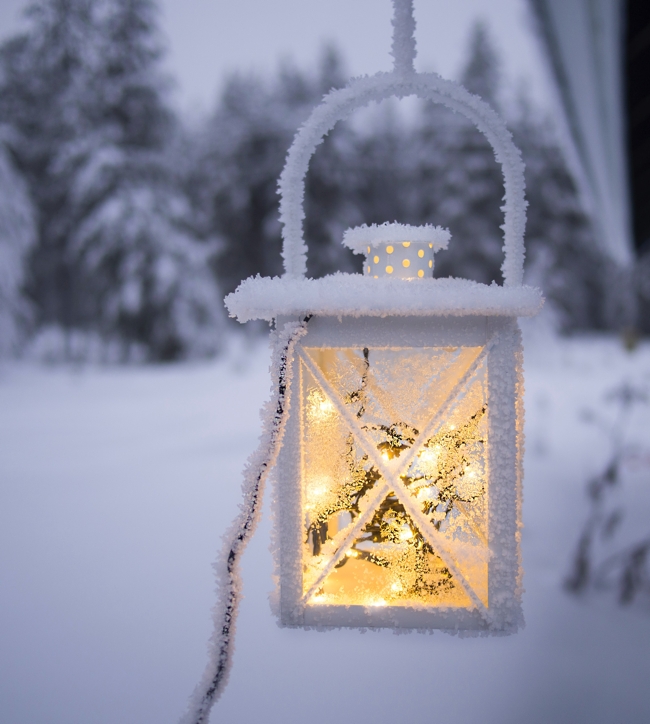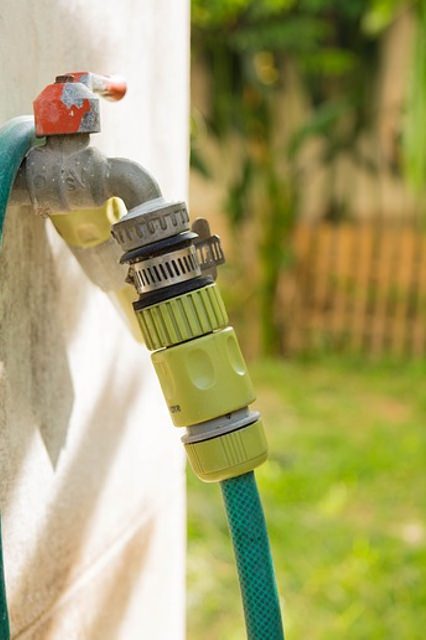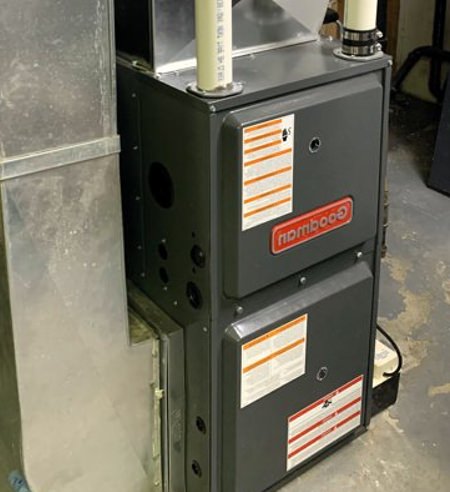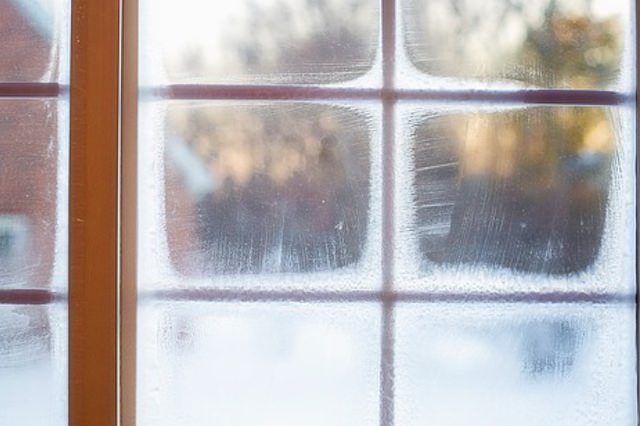Tips for Getting Your New Home Build Ready for Winter
Posted Saturday, January 1st, 2022 | 2,484 views
Before winterizing your new house for the first time, you should create a list of tasks that need to be done and followed each year. Preparing your house for the winter will ensure everything is working properly, and won’t fail you colder months of the year.
Ready Your New Home in the Fall
 Winterizing your home new house should start in the fall before your first winter, and preferably on a warm day. If the weather is mild it will be easier for you to manage your tasks and more comfortable for you.
Winterizing your home new house should start in the fall before your first winter, and preferably on a warm day. If the weather is mild it will be easier for you to manage your tasks and more comfortable for you.
Every home should be winterized. Water damage, ice buildup, the heavy weight of snow, and strong winds will batter your new build over the winter months. Winterizing your home properly before autumn ends ensures that it can easily survive the worst that winter has to offer.
Read our regular maintenance tips for your new home that will keep it in top condition.
The following are the best tips for winterizing new build homes for the first time.
Clean Your Eavestroughs
Even if you don’t have any trees planted yet around your home, there’s still a chance that there will be a build up of debris in your eavestroughs.
If your eavestroughs are not cleaned out at least once a year, you risk the chance of having drainage problems or ice build-up.
Examine Your Plumbing
The most common and severe form of winter damage in a home is frozen pipes. When pipes freeze, the water supply for your home gets completely cut off.
Eventually the pressure from the water and expanding ice can make the pipes burst and cause massive water damage.
Unprotected plumbing gets frozen very easily. A few good frosts in late autumn can be enough to freeze your pipes, so it’s best to winterize your plumbing as soon as possible.
A good idea is to purchase pipe insulation which will help the pipe stay at the same temperature of the water but even with proper insulation, your pipes can still freeze and burst if they are constantly exposed to low temperatures.
To help minimize the risk of frozen pipes, get a pipe thermometer and install a water leak sensor with an automatic shutoff valve.
Pipe thermometers will alert you if your pipes are reaching extremely low temperatures, allowing you to detect the problem and warm the pipes before they freeze.
In the event that you still suffer from a frozen and burst pipe after protecting it, you can use a water leak sensor with an automatic shutoff valve to minimize any potential damage.
Turn Off Exterior Faucets
 Make sure all exterior faucets and sprinklers are turned off for the winter. You can also winterize your outdoor hose to prevent split-hoses and/or damaged outdoor spigots.
Make sure all exterior faucets and sprinklers are turned off for the winter. You can also winterize your outdoor hose to prevent split-hoses and/or damaged outdoor spigots.
Simply shut off the water, drain the hose, wrap it and bring it inside. You can also shield the spigot with an outdoor faucet cover to protect it from ice buildup.
Buy Shovels, Rakes and Pet-Friendly Ice Salt
Having a few strong, reliable and ergonomic snow shovels is a must for any Canadian home. Even if you’re the only one in the home, it’s a good idea to buy a few shovels in case one breaks. If you’re in an area that tends to get a lot of snowfall, consider investing in a snowblower, and keep it properly maintained in the off season to ensure that it will be in good working condition when winter rolls around.
Roof rakes are also very useful for removing heavy snow from your roof. Snow quickly turns to ice if left on a roof for too long. Even slushy snow can become incredibly heavy, causing damages to the roof and, in a worst case scenario, collapses. Roof rakes will help you remove hazardous icicles from the edge of the roof before they become overly large.
When Autumn rolls around, stock up on pet-friendly ice salt. The salt will keep your walkways and driveway free of ice and prevents damage to your yard. Keep a few containers-full handy at all times.
Check the Door and Window Caulking
New home builds typically don’t have an issue with seals around the doors and windows like older houses since the caulking is brand new. However, it’s still a good idea to check all of the molding around your windows and doors to ensure that the caulking was applied well during construction.
Even a few gaps can allow enough air into your home to make it noticeably colder, which could hike up your energy bills. If you notice any gaps, apply a generous amount of caulking to the area, smooth it out with your finger and allow it to dry.
Check Your Furnace Filter
 Depending on how long you’ve lived in your new build, it’s a good idea to check your furnace filter and replace if it you need to.
Depending on how long you’ve lived in your new build, it’s a good idea to check your furnace filter and replace if it you need to.
A new filter will make your furnace work more efficiently and save on heating costs.
Put Up Reflective Stakes Along Your Driveway
If your home is in a location that gets heavy snowfall, your yard may get damaged from plows and aggressive shovelling.
To easily protect them, stick some reflective neon orange driveway stakes in the ground along the edges of your driveway and by your mailbox. This will ensure that plows and shovels don’t accidentally hit and damage anything around your driveway or walkways.
Maintain Nearby Trees
Dead trees and overhanging limbs are huge hazards in the wintertime. Not only are trees weakened by the frigid cold of winter, but the harsh winds and heavy snow easily topple dead trees or cause large limbs to fall on homes.
Fallen trees and limbs may wrack up thousands of dollars in damages to your home, and they pose a safety risk to you and your family. During summer or autumn, analyze nearby trees to see if they’re dying, dead, diseased or have overhanging limbs that need trimming.
If you spot any problematic trees, have them cut down, treated or trimmed before winter hits.
Install Radiator Reflector Panels
While not the most popular method of modern home heating systems, many new home builds will still opt to install radiators because they’re efficient and reliable.
To maximize the efficiency of your radiators, install reflector panels behind them. Reflector panels are thin sheets of metal that are easily installed behind your radiator to reflect heat into the room instead of the wall.
Try Window Insulation Film
 Even if your windows are sealed up well, you could still be losing a lot of heat in your house through the windows. The glass absorbs the cold temperatures from outside, lowering the temperature inside.
Even if your windows are sealed up well, you could still be losing a lot of heat in your house through the windows. The glass absorbs the cold temperatures from outside, lowering the temperature inside.
Window insulation film reduces temperature loss through the glass by 55 to 75%. The clear plastic film absorbs heat from the sun and transfers it to the room. It also helps prevent heat from escaping the room.
Window insulation film is cheap, quick and easy to install on nearly any window and substantially reduces draft.
Occasionally Run Your Ceiling Fan in Reverse
You may not believe it, but ceiling fans are just as useful in winter as they are in summer.
Most ceiling fans have a switch on the side or on the remote that allows you to reverse the rotation of the blades. Doing so will allow the fans to circulate the air in a room upwards instead of downwards.
In the wintertime, the upward circulation of air will allow the warm air that is trapped near the ceiling to be forced downward while the cooler air below gets driven upwards.
The circulation of warm air will make your rooms feel significantly warmer, which will help cut down on heating costs.
Adjust the Humidity Levels
While summer is the season of high humidity, winter is very dry. Low humidity levels are not only potentially damaging to your home but they also cause dry skin, sore throats, bloody noses, and chapped lips. Humidity also may irritate existing respiratory conditions and lower your immune system. It can cause high levels of static, chipped paint, cracking wood and possibly damage to electronics,
Some newly built homes have humidifiers built into them, and you can buy humidifiers for any room of the house at your local home improvement store. Ideally, the humidity in your home should be around 50 to 60% and never reach levels below 20%.
Just moved into a new house? Read Important Things To Do After Moving In.
